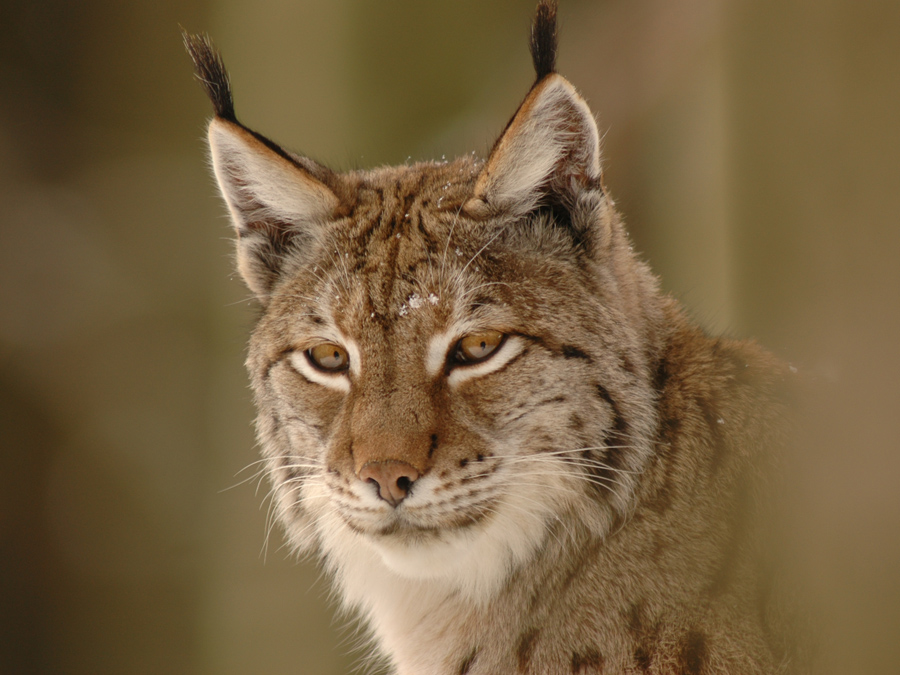Study into the spatial distribution of lynx in eastern Bavaria
Lynx population threatened by poaching

The lynx was declared extinct by the end of the 19th Century along the borders between Germany, the Czech Republic and Upper Austria. In the 1970s and 1980s, however, around 25 lynx were released back into this area. Since then, the lynx population has grown to approximately 50. The majority of these animals live in the Bavarian Forest National Park and the Šumava National Park.
“When the lynx were released, it was hoped that they would spread to new habitats, for example in the Ore Mountains or the Thuringian Forest,” explains Dr. Jörg Müller member of the Chair for Terrestrial Ecology at Technische Universität München (TUM) and Head Researcher at the Bavarian Forest National Park. “This is the only way of ensuring a large, stable population in the long term in Central Europe.”
Impact of human activity
In a recent study, scientists from TUM, the University of Zurich and the Bavarian State Environment Office joined forces to investigate why lynx are spreading so slowly in this region. They found that the lynx rarely venture more than 70 kilometers from the center of the national parks and that records of their activity collected by municipalities decreased the further away these towns or villages were from the national parks.
A study carried out in 2012 found that lynx in other areas such as Scandinavia are much more adventurous, with males in particular travelling up to an average of 150 kilometers. “We know that lynx are very timid and primarily live off roe deer,” says Müller. “And so we focused on the effects of human activity and prey density.”
The scientists looked at lynx records from 530 eastern Bavarian municipalities in and around the national park. The results were surprising: Human settlements and highways did not seem to disrupt the nocturnal lynx. There is sufficient prey for the animals outside the national parks. In fact, some areas are home to more deer than the parks themselves. “The territory provides ideal living conditions for the wild cats, and so something else is preventing them from expanding into other regions. We believe that the population is being decimated by illegal killings.”
To obtain reliable information about potential disruptive factors and food supplies, researchers analyzed comprehensive information gathered from 2005 to 2010 and compared this with the lynx observations. They used data from satellites to measure nocturnal light – and subsequently human activity – in towns and streets. Roe deer density was quantified based on reports of wild animals killed on roads. This is a reliable source, as drivers must report accidents of this kind to the police to receive compensation from their insurers.
Population remains isolated
Poaching can only be proven in very rare cases. However, young, documented animals do disappear. In 2012 and 2013 one lynx was poisoned and a pregnant female was found shot dead. Müller also has access to data from the Czech Republic. Here, poaching becomes statute barred after just one year. Illegal killings are therefore often reported retroactively. “Since the reintroduction of the lynx, 62 killings have been reported to the authorities – the actual figure is presumably much higher,” adds Müller.
This pattern makes it almost impossible for the lynx to connect with other groups in the Harz mountain range, the Vosges, the Carpathian Mountains or the Alps. For these populations to mix, Müller believes that lynx would have to be released in several regions across Central Europe at the same time, preferably in densely wooded regions with high roe deer populations. “In the long term, this is the only way that Europe's third largest predator will be able to survive,” summarizes Müller.
A few months ago, the TUM Chair for Terrestrial Ecology and the Bavarian Forest National Park signed an agreement cementing their collaboration in research and teaching. “Our work shows just how important national parks are when it comes to preserving species. It also highlights the need to actively support diversity outside of protected zones,” concludes chair holder Prof. Wolfgang Weißer.
Publication:
Protected areas shape the spatial distribution of a European lynx population more than 20 years after reintroduction, Jörg Müller, Manfred Wölfl, Sybille Wölfl, Dennis W.H. Müller, Torsten Hothorn, Marco Heurich, Biological Conservation 177 (2014) 210–217
Contact:
PD Dr. Jörg Müller
Technische Universität München / National Park Administration
Tel.: +49 8552 9600-179
joerg.mueller@npv-bw.bayern.de
Prof. Dr. Wolfgang Weißer
Technische Universität München
Chair for Terrestrial Ecology
Tel.: +49 8161 71-3496
wolfgang.weisser@tum.de